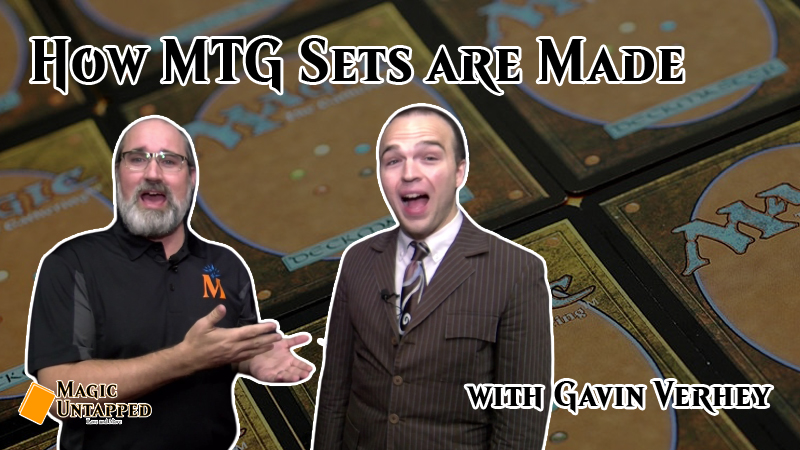A lot of work goes into the creation of Magic: The Gathering cards and sets.
Just how much?
Gavin Verhey, Principal Magic Designer with Wizards of the Coast, joins Magic Untapped to talk a bit about the process of making Magic cards from conception to print.
"It takes years of time for it to happen," says Verhey. "An average Magic set takes two and a half to three years and, with Universes Beyond, it can take even longer sometimes."
As for what happens during that multi-year period, it first starts with deciding whether or not to design a set top-down or bottom up. The former means you start with a concept, theme, or something else to tie everything together flavor-wise, then begin to create cards that fit into that. As for the latter, it's creating cards to fit a certain role.
"It's like, okay, we need a red burn spell at common, okay, let's figure out the red burn spell, put the set mechanic on it, we'll figure out the creative later," he explains.
WATCH: MTG'S GAVIN VERHEY CHATS ABOUT HOW MAGIC SETS ARE MADE
Set design goes through three phases: Exploratory, Vision, and Set Design.
Throughout each phase, there's a lot of playtesting and tweaking and fine-tuning cards, figuring out which cards and mechanics fit, which don't, and what to do with them when that occurs. And, due to that, Magic designers create far more cards than are ever printed in a single Magic: The Gathering set.
"For any given set there are thousands of cards made that you never see," Verhey points out.
Typically, through the three phases of design, a set's designers and developers will have a clear idea of what works and what doesn't. Of course, every now and then they realize that something simply isn't gelling with the rest of the set the way it should a bit late in the process.
"Usually what we do as designers is if we have to change something really later on down the path, we pick something pretty safe because you don't want to make a mistake that is going to blow something up on accident," explains Verhey. "So, if you pull out a mechanic late that's kind of risky, you put in a mechanic that you know is going to work."
Those last-minute substitute mechanics, according to Verhey, tend to be one of Magic's preferred standbys such as cycling, flashback, or something else they've done a bunch of times that they know is rather safe. And, while it doesn't happen very often, it did occur not too long ago during Streets of New Capenna.
"We had the hideaway cycle of enchantments at rare," he points out. "That was originally a much different, much more ambitious mechanic and we got kind of close to the end and it just wasn't working out for both gameplay and even the rules perspective. So we decided just to pull [it] out and put something in that would put in instead."
Magic game designers aren't doing all of this and more on just one set. They're juggling multiple projects at once, which can lead to very interesting work days.
"It feels like being a time traveler, because on any given day I'll be working on something for two years from now, next year, three years from now, four years from now, and you gotta keep in mind where everything is and what's next to it," says Verhey. "Because what one set needs...is very different from a set a few years down the line."
In the end, though, Verhey is glad they have the time they do in order to do their best to get every aspect of a set right from the art to the design to the flavor and so on.
Magic: The Gathering's next set, The Caverns of Ixalan, is set for release Nov. 17, followed by the all-reprint set, Ravnica Remastered on Jan. 12, 2024.









